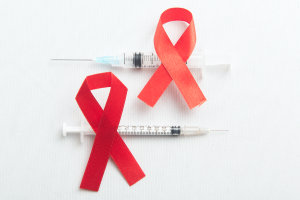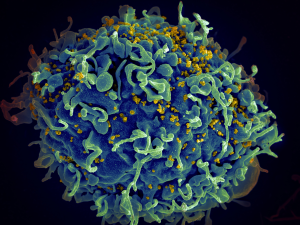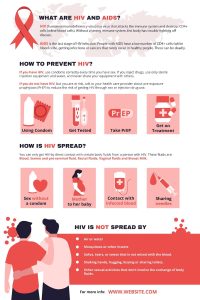Disclaimer:
This article is for information purposes only. It is not a substitute for medical advice or treatment. Seek medical care for your treatment.
What is HIV?
HIV is a virus that harms the cells of immune system and undermines your capability to confront everyday infections and disease.
Stages of HIV:
HIV progress through 3 stages:
- Stage 1: acute stage, the first few weeks after the transmission
- Stage 2: clinical latency or chronic stage
- Stage 3: AIDS
AIDS:
AIDS is used to describe various fatal infections and illnesses that happen when your immune system has been immensely damaged by the HIV virus. AIDS cannot be passed on from one person to another but the HIV virus can. Lately there is no cure for HIV, but there are plenty of valuable drug treatments that ensure people with the virus to live a long and healthy life. With the help of early diagnosis and successful treatments, most of the people with HIV will not grow any AIDS related illnesses and will live a normal life.
Symptoms for HIV:
Typically people have flu like illness 2-6 weeks after HIV infection that continues for almost a week or 2. After these symptoms vanish, HIV may not show any symptoms for years although the virus keeps on targeting your immune system. Anyone who is doubtful they should immediately get tested for HIV because lots of people with HIV are not aware that they are infected. People with great risk are told to have regular tests.
Causes of HIV infection:
HIV is present in the body fluids of an infected person. It is found in semen, vaginal and anal fluids, blood and breast milk. HIV cannot be spread through sweat, urine or saliva. It is a frail virus and does not last long outside the body. In UK having unprotected vaginal or anal sex is the most frequent way of getting HIV. Some of the other ways of getting HIV are:
- Sharing needles, syringes or other injecting equipment
- Spread from mother to baby during pregnancy, birth or breastfeeding
The chance of having HIV via oral sex is low and is reliant on many things, whether you give or receive oral sex and the oral hygiene of the person giving the oral sex.
Treatment for HIV infection:
After the diagnosis of HIV, treatment should be stared as soon as possible. The chief treatment for HIV is antiretroviral therapy, a combination of regular medicines that halt the virus from multiplying. This safeguards CD4 cells, keeping the immune system sturdy enough to take steps against disease. Antiretroviral therapy obstructs the HIV from advancing to AIDS. It also lowers the risk of transmitting HIV to others. The viral load will be “unnoticeable”. The person still has HIV but the virus is not apparent in tests. The virus is still present in the body and if that person halts taking antiretroviral therapy, the viral load will grow again and the HIV can start targeting CD4 cells.
Medications for HIV:
It is allowed to treat HIV with various antiretroviral therapy drugs. Their objective is to impede HIV from expanding and from killing CD4 cells, which aid in the immune system’s ability to begin an attack. This lowers the risk of growing complications linked with HIV, as well as passing the virus to others. These antiretroviral medications are grouped into seven classes:
- Nucleoside reverse transcriptase inhibitors (NRTIs)
- Non-nucleoside reverse transcriptase inhibitors (NNRTIs)
- Protease inhibitors
- Fusion inhibitors
- CCR5 antagonists
- Integrase strand transfer inhibitors
- Attachment inhibitors
Treatment regime:
The U.S. Department of Health and Human Services (HHS) usually suggests a starting regime of three HIV medications from minimum two of these drug classes. This combo averts HIV from developing resistance to medications. Many antiretroviral medicines are fused with others so that a person with HIV generally takes only one or two pills a day. A doctor will assist a person with HIV in choosing a regimen depending upon their overall health and personal conditions. These medicines must be taken regularly as prescribed. If they are not consumed properly, viral resistance can grow and a new regime may be required. Blood test will highlight if the regimen is working to keep the viral load down and the CD4 count up. If an antiretroviral therapy regimen is not working appropriately, the person’s healthcare provider will change them to a different and more successful regime.
Adverse effects and costs:
Antiretroviral therapy side effects can differ and involve headache, nausea, and dizziness. Mostly, these symptoms are fleeting and die with the passage of time.
Harm to the liver or kidneys as well as mouth and tongue inflammation are examples of chronic side effects. The drugs can be changed if there are serious side effects. Some of the side effects are:
- Nausea and vomiting
- Heart ailment
- Kidney and liver damage
- Fragile bones
- Abnormal cholesterol levels
- Higher blood sugar
- Cognitive and emotional problems, resulting in sleep issues
Antiretroviral therapy costs fluctuate based on the patient’s insurance type and geographic location. Assistance programmes are offered by certain pharmaceutical companies to help with costs.
Conclusion:
Knowing about having any life-threatening disease is heart breaking. The emotional, social and financial consequences of HIV/AIDS can make it difficult to cope with this illness not only for you but also for your loved ones. Fortunately in present time many advanced services and treatments are available for people who are diagnosed with HIV. Many HIV/AIDS clinics have social workers, counselors and nurses who can guide you regarding this illness.
It is essential to practice yoga or do meditation to lower your stress levels and distract your body and mind. This will boost your daily routine.




